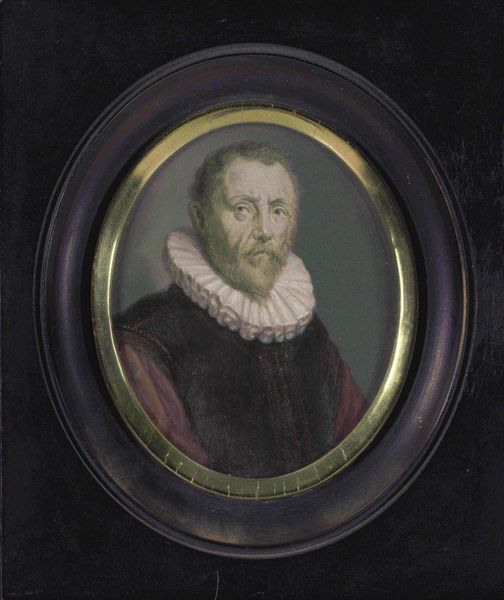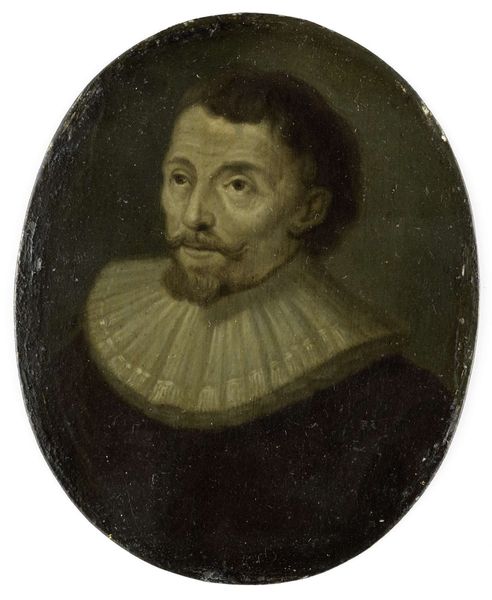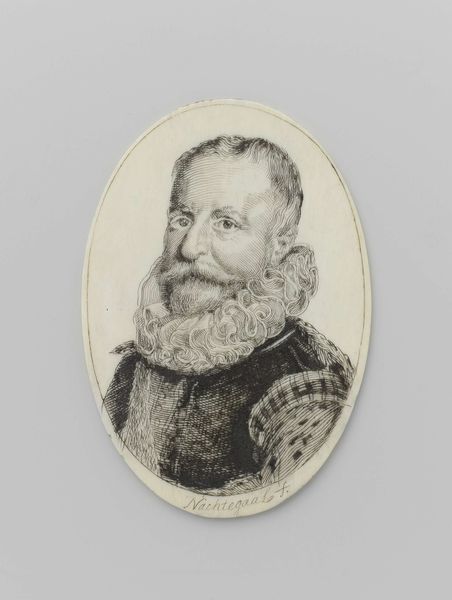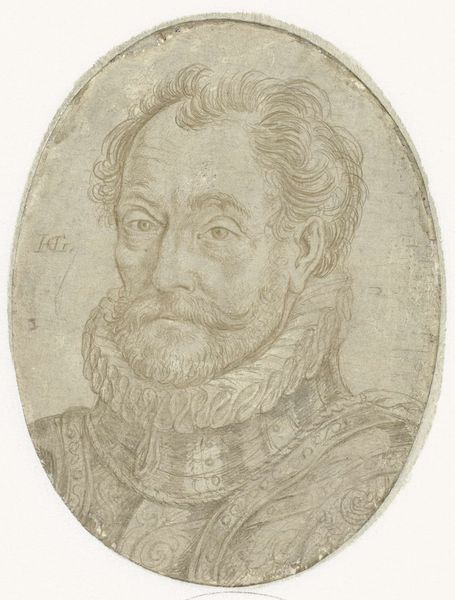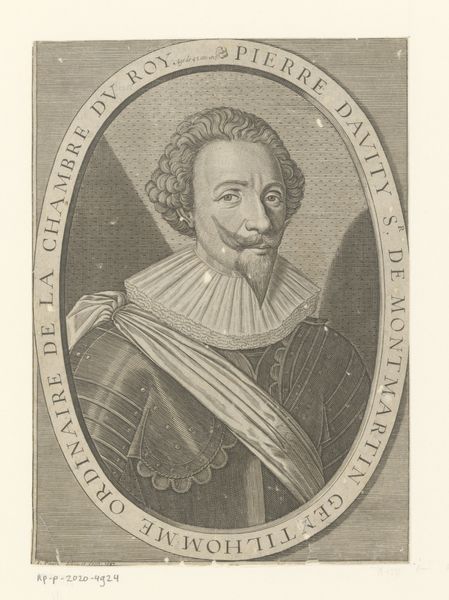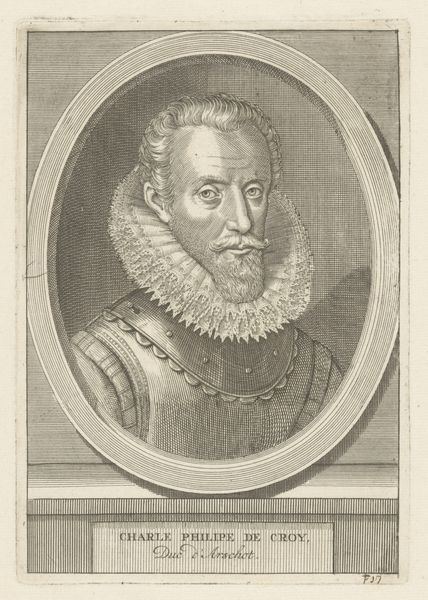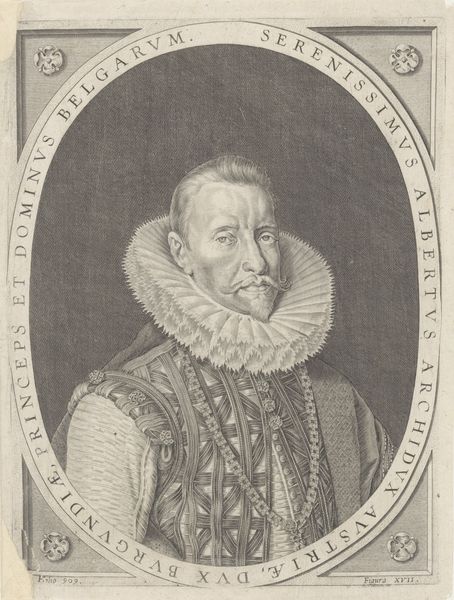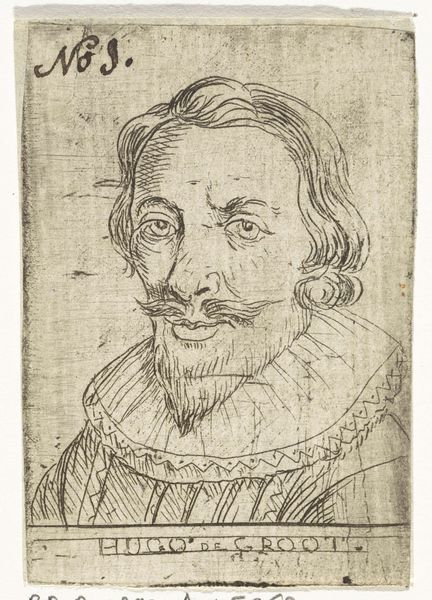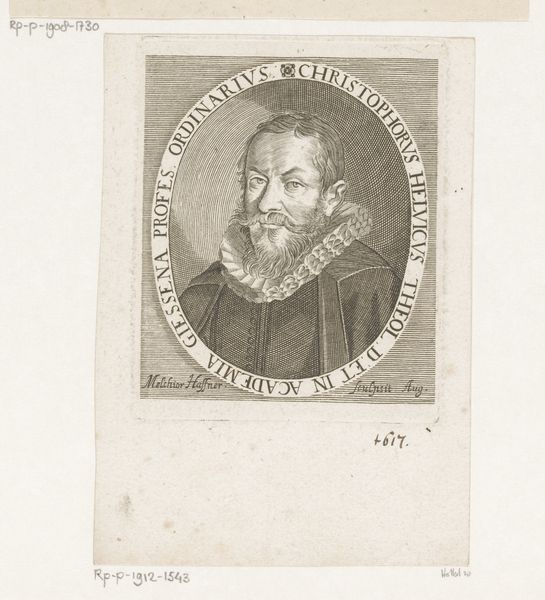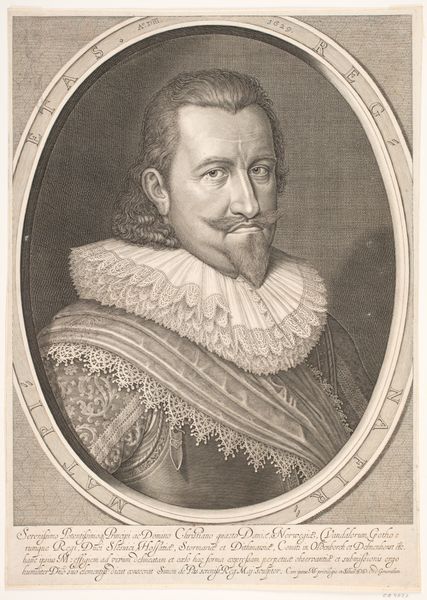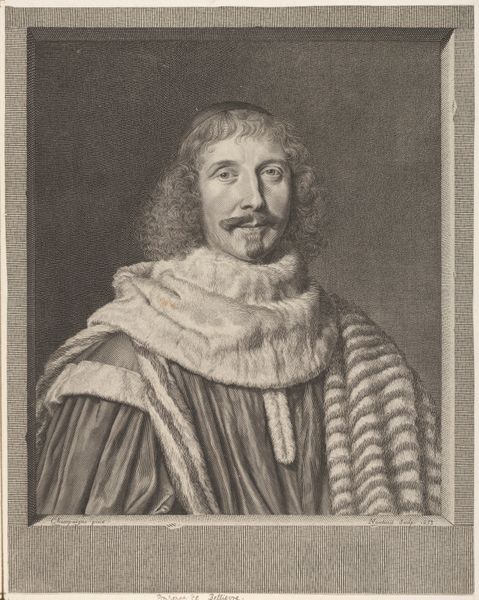
engraving
#
portrait
#
baroque
#
pencil drawing
#
history-painting
#
engraving
Dimensions: height 7.7 cm, width 5.5 cm, depth 0.3 cm
Copyright: Rijks Museum: Open Domain
Curator: Here we have a miniature portrait identified as Hugo de Groot, dating roughly between 1600 and 1650. It’s believed to be an engraving. What strikes you first about it? Editor: It's the crisp precision, even at this small scale. The lines are so fine, creating a remarkable amount of detail, especially in the ruff. You can almost feel the starched fabric. What was the purpose of making these kinds of portraits? Curator: Well, these miniatures served multiple roles. Obviously, portraiture was increasingly important to mark social standing, and allowed a broader social reach, as printed engravings facilitated the dissemination of one's image throughout learned society. Editor: Dissemination through reproduction, very interesting. The fact that this image could circulate underscores its function beyond pure aesthetics; it’s about spreading an idea or projecting authority, even for those who weren't the direct commissioners of the piece, which emphasizes that printing democratizes images. Is that correct to assume? Curator: Exactly. Engravings allowed a greater segment of the population to participate in the visual culture of their time. Let's remember that De Groot was an extremely important intellectual, whose image would carry a significant symbolic weight. Editor: It speaks volumes that this image had political reach at the time; there's also the laborious and artisanal work required in producing engravings at scale, which tells of a deep connection to material practice, emphasizing the value society places in manual, skilled labor. Curator: Yes, skilled labor crucial for propagating political and cultural values. But remember, it is not merely a ‘democratization,’ the social class in power decided what to represent and whose faces to circulate. Editor: Good point. It raises a critical point regarding who controlled the narrative. Despite engravings allowing more widespread availability of images, those images still reflected very specific interests and powers, which, even today, dictate what gets reproduced. Curator: And ultimately, the politics behind these historical miniatures are inextricably linked to current power structures shaping what we see and value today. Editor: Definitely a historical lesson on the interplay between production, image, and control that remains so relevant even now.
Comments
No comments
Be the first to comment and join the conversation on the ultimate creative platform.
